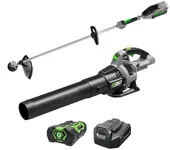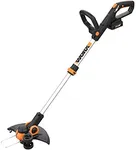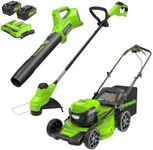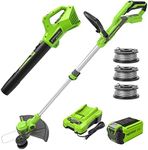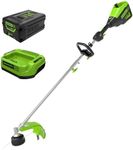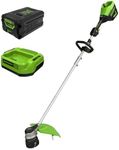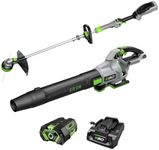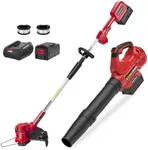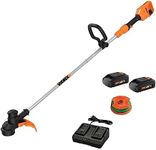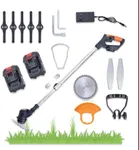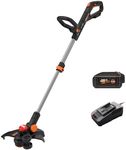Buying Guide for the Best Electric Weed Eaters
Choosing the right electric weed eater can make yard maintenance easier and more efficient. It's important to think about the size of your lawn, the type of weeds or grass you need to cut, and how comfortable you are using outdoor power tools. Electric weed eaters are generally lighter, quieter, and easier to maintain than their gas-powered counterparts, making them a great choice for most home users. Knowing what features matter most to you will help you find a weed eater that truly meets your needs.Power Source (Corded vs. Cordless)Electric weed eaters can be either corded (plugged into an outlet) or cordless (battery-powered). Corded models offer unlimited run time but require access to a power socket and can limit your range because of the cord length. Cordless models run on rechargeable batteries, giving you total freedom to move around but only operating as long as the battery lasts before a recharge is needed. If you have a small yard or easy access to power outlets, a corded model may be best. For bigger lawns or areas without easy access to electricity, a cordless weed eater offers greater convenience.
Cutting WidthCutting width refers to the size of the area the weed eater can cut in one pass. A wider cutting width (typically between 12 to 16 inches) means you can finish your trimming job more quickly, making it suitable for larger lawns or heavy-duty work. Narrower cutting widths (around 10 to 12 inches) are ideal for tight spaces, precision trimming, or smaller yards. Consider your yard size and the types of areas you'll be trimming to choose the best cutting width for your needs.
WeightThe weight of a weed eater affects how easily you can maneuver and control it, especially during longer yard sessions. Lighter models are easier for most people to carry and handle, reducing fatigue, while heavier models may offer more power but can be harder to use for an extended period. If you have difficulty lifting heavy items or plan to use the weed eater often, a lightweight model will be more comfortable.
Shaft Design (Straight vs. Curved)Weed eaters come with either a straight or a curved shaft. Straight shafts are generally better for reaching under shrubs or fencing and are more comfortable for taller users. Curved shafts are usually lighter and easier to handle, especially in tight spaces or for shorter users. Think about your height and the types of areas you need to trim to choose which shaft design will be more comfortable and effective for you.
Line Feed SystemThe line feed system refers to how the cutting line is released during use. There are manual feed systems, bump feeds (where you tap the head on the ground to release more line), and automatic feed systems (which release line as needed). Automatic feed systems are most convenient but can sometimes be less reliable over time. Bump feeds offer more control and are simple to understand, while manual systems require you to stop and adjust the line. Choose a system based on how comfortable you are with making adjustments mid-job and how much convenience you want.
Battery Life (for Cordless Models)For cordless electric weed eaters, battery life affects how long you can run the tool on a single charge. Longer battery life means you can cover more ground without interruptions, which is key for bigger yards. But larger batteries can also mean more weight. Assess the size of your yard and how much time you’ll typically spend trimming to determine the battery life you need. If you have a very large area to cover, you may want an extra battery on hand.
Adjustable FeaturesMany weed eaters come with features like adjustable handle positions, telescoping shafts, or the ability to rotate the trimmer head for edging. These features can make the tool more comfortable and versatile, allowing you to adapt it to your body and the specific tasks you need to accomplish. If comfort and multi-tasking are important to you, look for a model that offers convenient adjustments.
